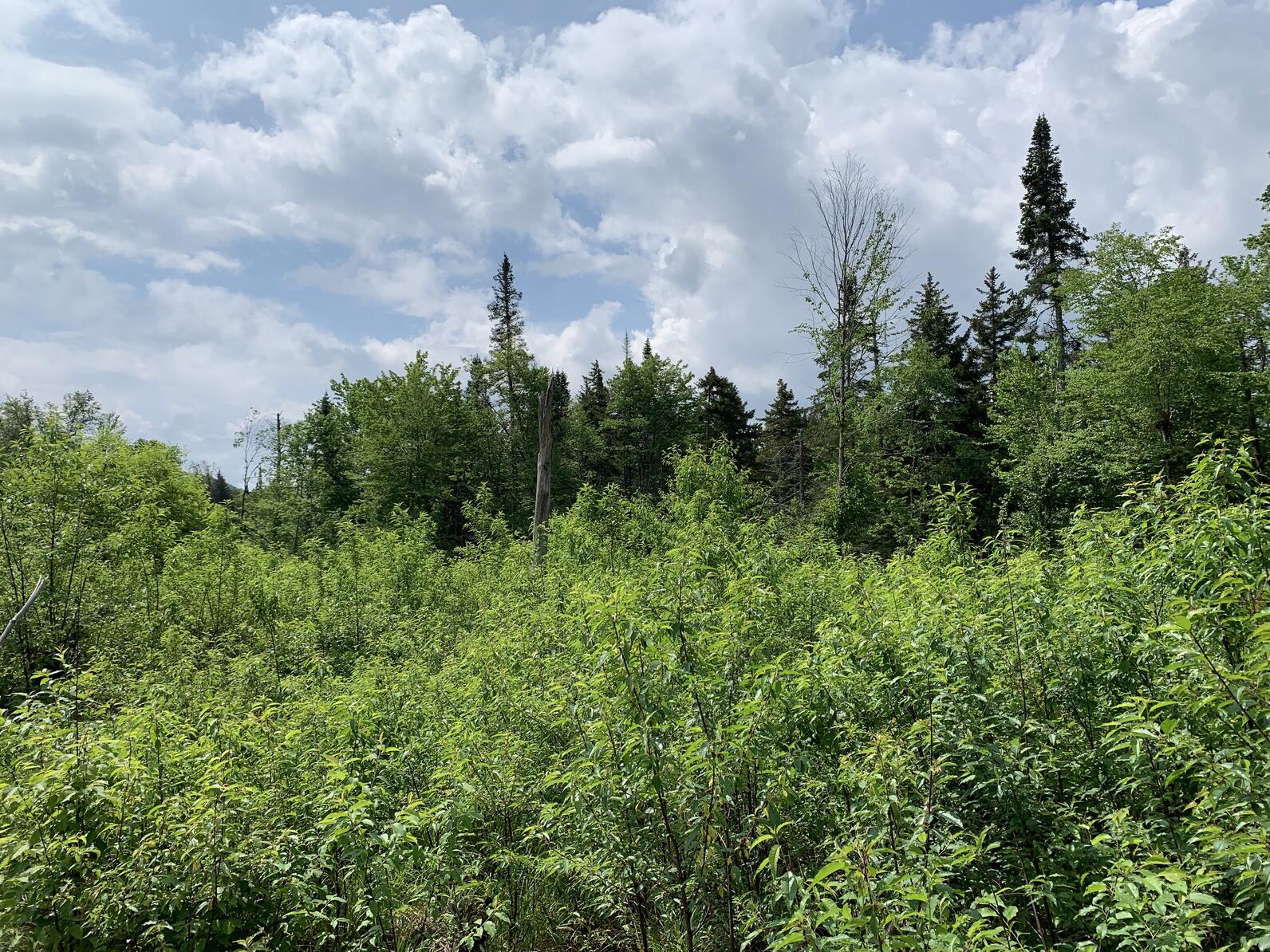For the second time that morning, Eric Lind, Director of Center Programs and Education, has caught (and immediately released) the same Chestnut-sided Warbler in his banding station’s mist net.
“Either she has a nest right near the net, or she just really likes me,” he jokes.
It’s 8am, and Lind has been up for hours. By 5am he was out surveying with Forest Program Manager Suzanne Treyger as part of the team’s biannual breeding bird surveys at the Kunjamuk Young Forest Demonstration Project in the Adirondacks.
The birds they survey and band tell them how forest management has created new and more diverse habitat conditions for a suite of forest birds, many of which are declining rapidly. Ultimately, they’ll share their learnings with other forestry and land management stakeholders, with the goal of improving forest management at scale throughout New York and neighboring states.
Fascinated by how forests play a role in bird health? Sign up here to receive news, resources, and event invitations specific to this work.
So far, the team has caught and banded a Chestnut-sided Warbler, Ovenbird, White-throated Sparrow, and a Common Yellowthroat, all birds which depend on a diverse mix of healthy forest habitat to thrive. See the video below to watch them in action!
Lyme Adirondack Forest Company (an affiliate of the Lyme Timber Company) and the Wildlife Management Institute are cooperatively developing this demonstration project on a portion of Lyme’s 239,000-acre ownership in the Adirondack region of New York. The project shows how commercial timber harvesting can create young forest habitat in a carefully planned, science-based, sustainable manner over many decades, benefitting a full suite of forest birds and other wildlife.
“As a forest management company and one of the largest private landowners in New York State, it is imperative that we consider the larger landscape level needs of the Adirondacks. With the help of Audubon and the Wildlife Management Institute, we have been able to embark on a decades-long project to ensure that some early successional habitat is available for a whole host of bird and wildlife species that require it. We are absolutely thrilled with the results so far and look forward to watching the progression of species richness and abundance over time,” said Eric Ross, general manager of the Lyme Adirondack Forest Company.

The results are lush regrowth of young forest, including trees, shrubs, and other plants that offer enhanced food and cover to birds and other wildlife. Lind and Treyger are banding in an area that was cut in June of 2017, and the net results are literally in their net – Chestnut-sided Warblers, for instance, can’t survive in a mature forest with just tall trees. They need young forest to nest in and raise their young.
“Birds that nest in young forest, like the Ruffed Grouse and White-throated Sparrow, now have a home at the Kunjamuk Young Forest Demonstration Project,” said Eric Lind. “Birds that nest in more mature forests will still thrive here, especially those that take their fledglings into young forest late in summer to access fruits, insects, and find denser habitat where their inexperienced young can safely fledge.”
Creating and maintaining healthy, diverse forest habitat calls for human intervention. Our forests and forest birds are under stress, due to invasive species, excessive deer browse, climate-related stressors, and much more. It’s resulted in drastic population declines for beloved forest birds, like the Cerulean Warbler, Wood Thrush, and American Woodcock.
To address the heart of the issue, Audubon works with land managers like those at Kunjamuk, and family woodland owners, to improve forest health.
Healthy forests are resilient to stressors such as climate change and invasive species, and they provide critical ecosystem services that benefit people, including flood control, water quality protection, and carbon sequestration, as well as forest products and recreational opportunities.
The harvests at Kunjamuk will create forest age and tree-species diversity, helping to keep the forest healthy and resilient. “What really makes me smile is knowing that all the work I’m doing will help the birds have the food and habitat they need to nest and survive,” says Treyger.



